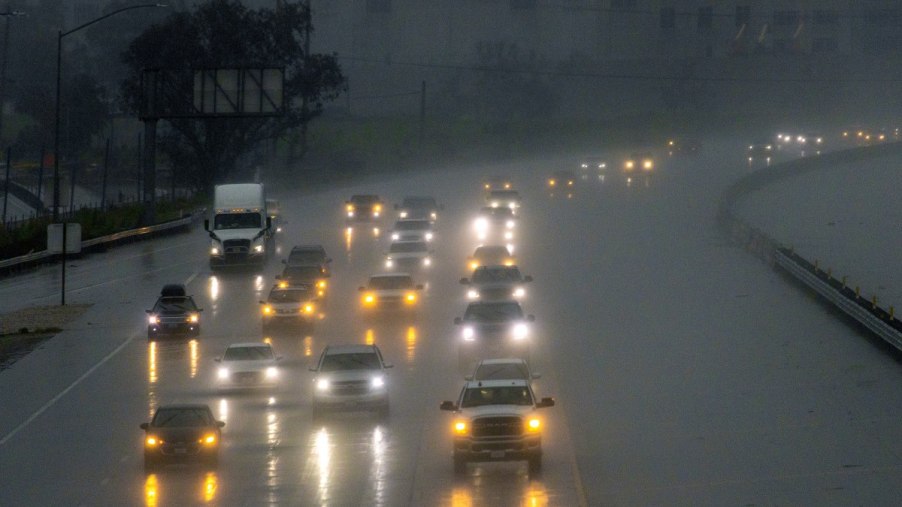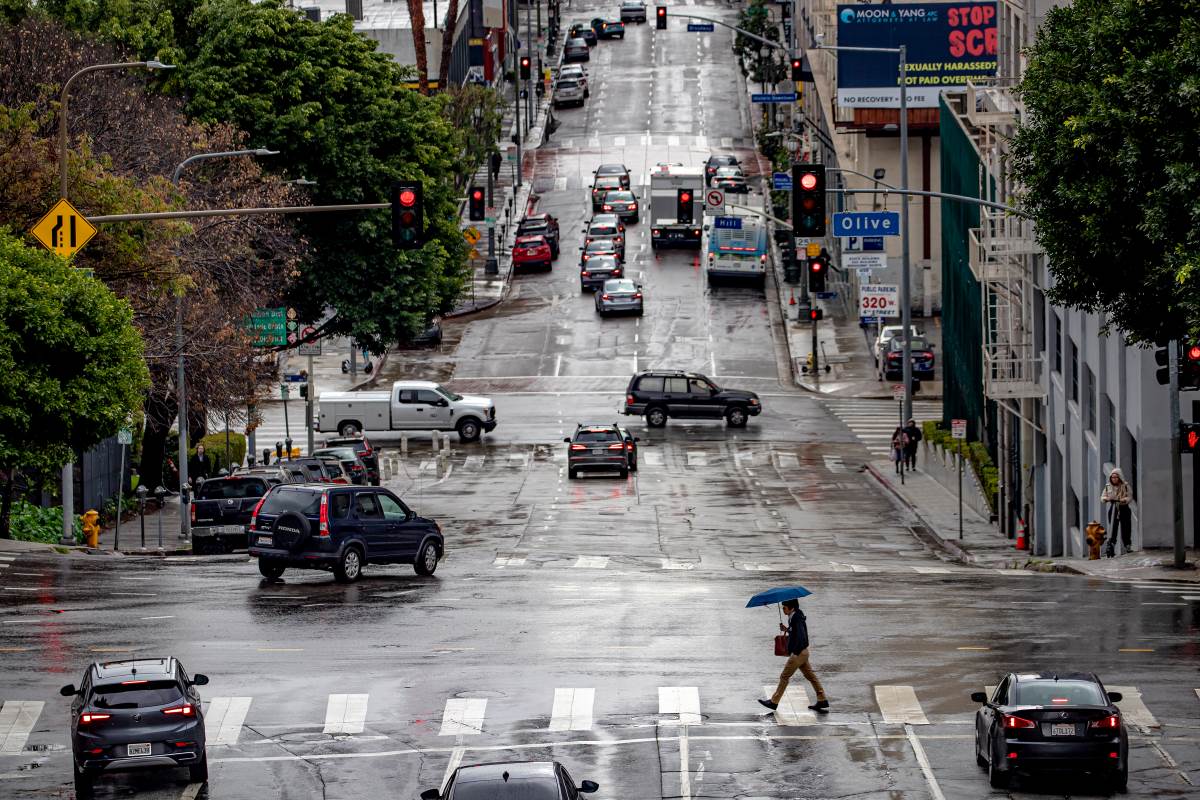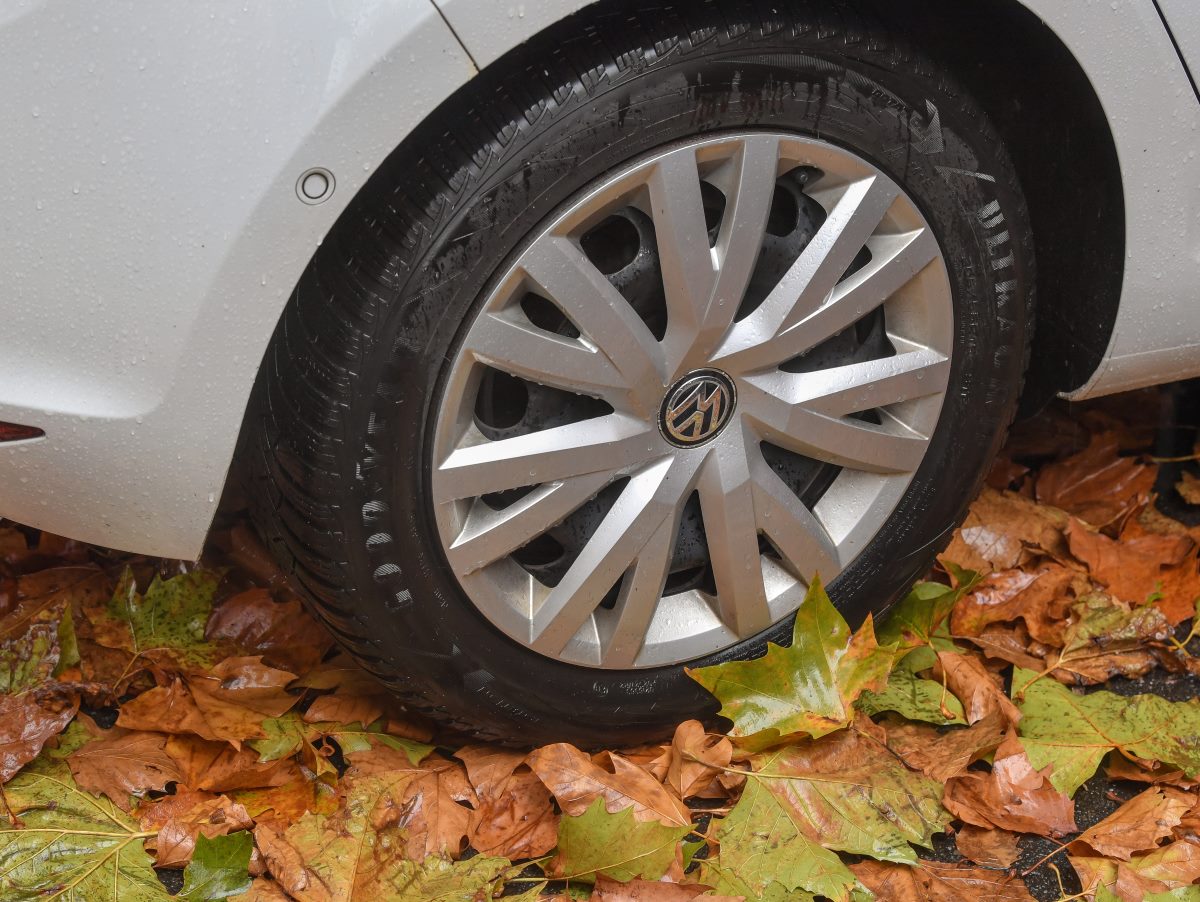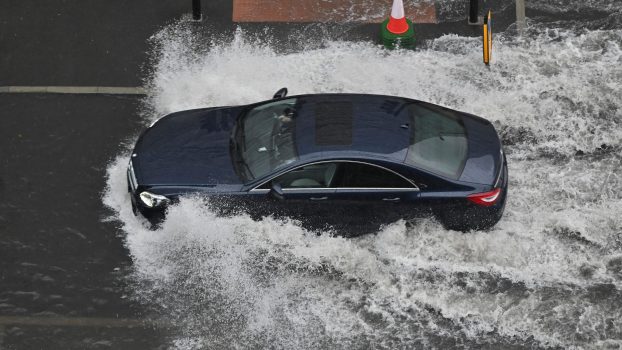
3 Hidden Dangers When Driving in the Rain
When driving in the rain, many of us already know to slow down and understand the conditions of the road around you. Standing water, reduced visibility, and reduced grip all contribute to the more hazardous driving conditions in the rain. But there are some hidden dangers from driving in wet weather as well. Here, we’ll look at 3 hidden dangers when driving in the rain and how you can stay safe when the skies open up.
Road paint is extremely slippery when wet

Getting to grips with a wet surface is already tricky enough, but adding paint to the mix makes things even worse. Many municipalities use road paint that is extremely slippery when wet. This hidden danger makes driving in the rain even more treacherous, even if you’re driving appropriately for the conditions.
On single-lane roads, even touching the yellow or white lines in the rain can cause a drastic change in overall grip level. Hit one with the front tires and you’ll momentarily lose steering at the front. Dip a rear tire onto wet road lines and you can find yourself looking out the side windows at what was previously in front of you.
Not only are these changes in grip drastic, but they’re often immediate. You won’t feel much of a ridge when crossing onto a painted road line. But you will feel the handling of your car suddenly change, and that can be dangerous even at relatively low speeds.
Concrete surfaces can be a danger driving in the rain
Much like painted road markings, concrete pavement can also be extremely dangerous when driving in the rain. The construction of concrete means it isn’t able to dispel water in the same way as traditional asphalt. The non-porous nature means it is easier for water to puddle, which leads to hydroplaning.
The real hidden danger of driving on concrete in the rain is due to its color. Black asphalt retains more heat from the sun than the light gray of concrete. That allows for an evaporative effect as rainwater hits the hotter asphalt surface. This, in conjunction with asphalt’s absorbent nature, means that even a light rain will leave more standing water on a concrete road.
Freshly-poured concrete roads often contain chemicals that rise to the surface when activated by rain. These create an extremely slippery surface that is akin to driving on an oil slick. Under these conditions, it is dangerous to drive in the rain even with excellent tires and all-wheel drive.
Wet leaves and grass clippings are hazardous on rainy roads

One of the more sinister hidden dangers when driving an icy road is when nature gets involved. From wet leaves and grass clippings to mud and sand from runoff and agricultural equipment, there are plenty of natural hazards that make rain driving more difficult.
While you may easily spot piles of mud from a tractor driving on a back road, fallen leaves and wet grass will be harder to spot. Still, the rain acts as a sort of lubricant, allowing the leaves to slide across the paved surface below.
When cornering, that means an unsteady surface that feels like snow or ice. And if you’re not ready for it, the sudden change in road conditions can make it easy to lose control, as this Fox Weather report shows.
Hidden dangers on wet roads
Most of the time driving is either fun or an uneventful commute from one place to another. Sometimes, however, roads offer increased danger. Driving in the rain on wet roads levels up the potential hazards for obvious reasons like reduced visibility and decreased traction.
These three hazards are common yet less often considered. Even so, road paint can create even more slippery surfaces than water alone. Driving on concrete versus asphalt can also increase the chance to slip and slide. Plus, there’s always a chance that leaves or grass clippings are on the road making it even harder for tires to stick.




